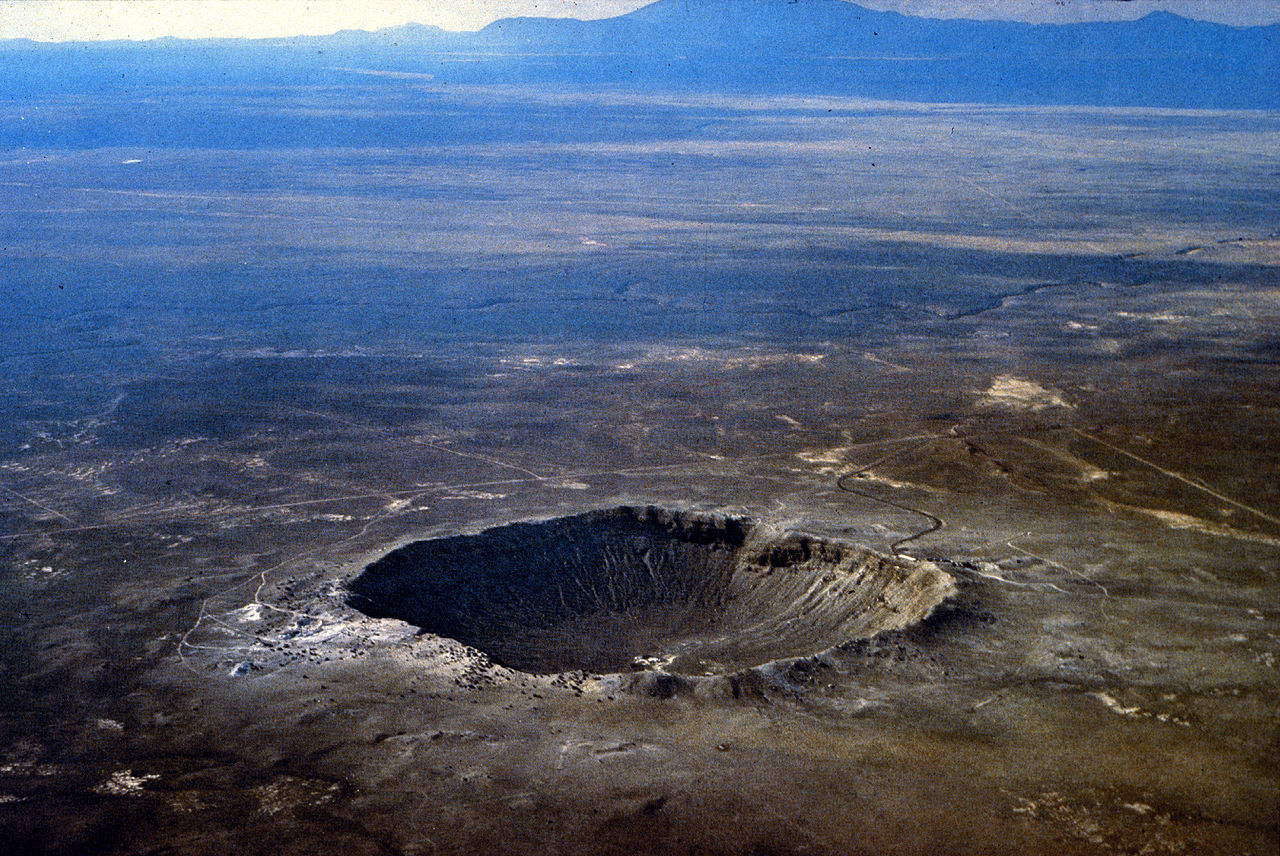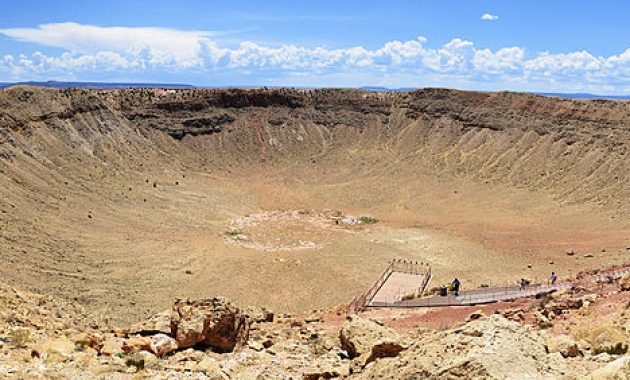Geologists from the University of New Brunswick in Canada tell us that at least six clues allow us to authenticate a meteorite impact, based both on macroscopic morphometric and stratigraphic analyzes and microscopic analyzes of samples taken from the site. These clues are also good indicators to discover the possible.
First, the presence on the site of percussion cones (or shock cones, shatter cones) that is to say rock fragments altered under the impact, showing important fracture lines. They have a fan shape with the tip pointing towards the point of impact. They formed when the shock wave propagated through the rocks, the wave branching out in a tree-like fashion, cracking the rocks. The shards thus take on a so-called “ponytail” shape. These cones appear under pressures of 2 to 30 GPa (20-300 million atmospheres).
Second, presence of planar deformed structures (PDF) of micro and macroscopic size (tens of cm) in rocks found in situ. Quartz is a mineral that easily retains the memory of the extreme pressures generated during an impact. Under pressures of 8 to 25 GPa, shocked quartz crystals exhibit PDFs that extend to different scales following crystallographic planes. They appear in outcrops as striated fractures forming a partial or complete conical structure. They are common under the crater floor, in the raised part of impact structures, but they can also be found in isolation in breaches and mega-breach areas.
Third, presence of polymorphic minerals formed at high pressure on the site (analysis by XRD, X-ray diffraction in particular). Under pressures of more than 25 GPa, certain stable minerals (there are more than 4000 of them on Earth, including 295 found in meteorites), see their atomic and structural arrangements transform into an amorphous (non-crystalline) phase without fusion. Let’s say a quick word about this property. Despite this sci-fi name, polymorphism is a common property of crystals. Among the most well-known polymorphic minerals we can obviously mention carbon (C) which has graphite with a hexagonal structure and diamond with an isometric structure as polymorphs.
We can also mention pyrite (FeS2) with an isometric structure (bar32m) and marcasite which is its altered orthorhombic polymorph (2 / m2 / m2 / m). Under certain conditions, it is even difficult to differentiate them from one another. Finally, we can cite pure silica (SiO2, one of the constituents of glass), the polymorphs of which are quartz, tridymite, cristobalite, coesite and stishovite. In the case of minerals associated with an impact crater, these polymorphs are created without a fusion phase and inform geologists of the occurrence of a violent phenomenon at very high pressure.


please
yeah
good
yessiree
hnbj
5tg4t
dsada
go
gen
Saee